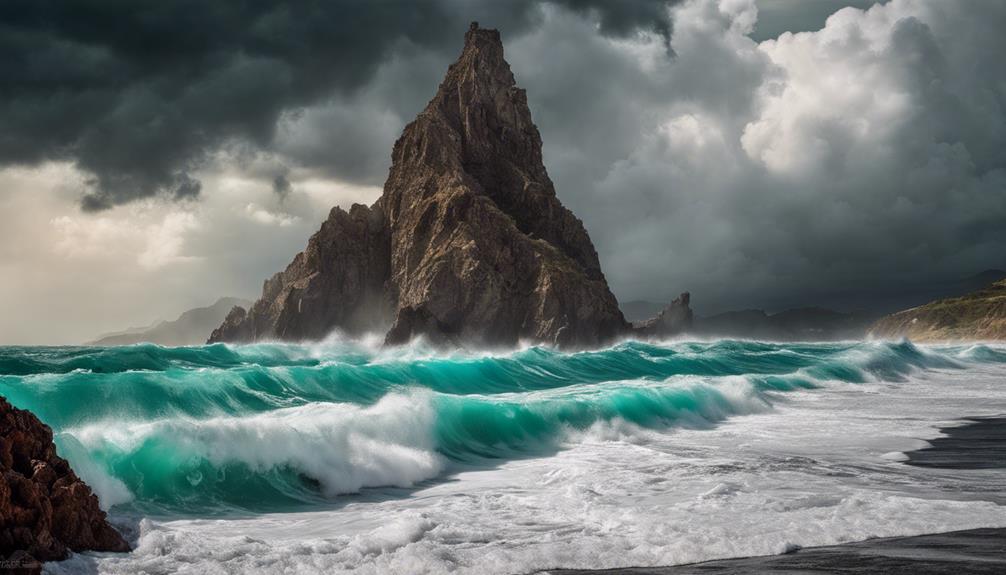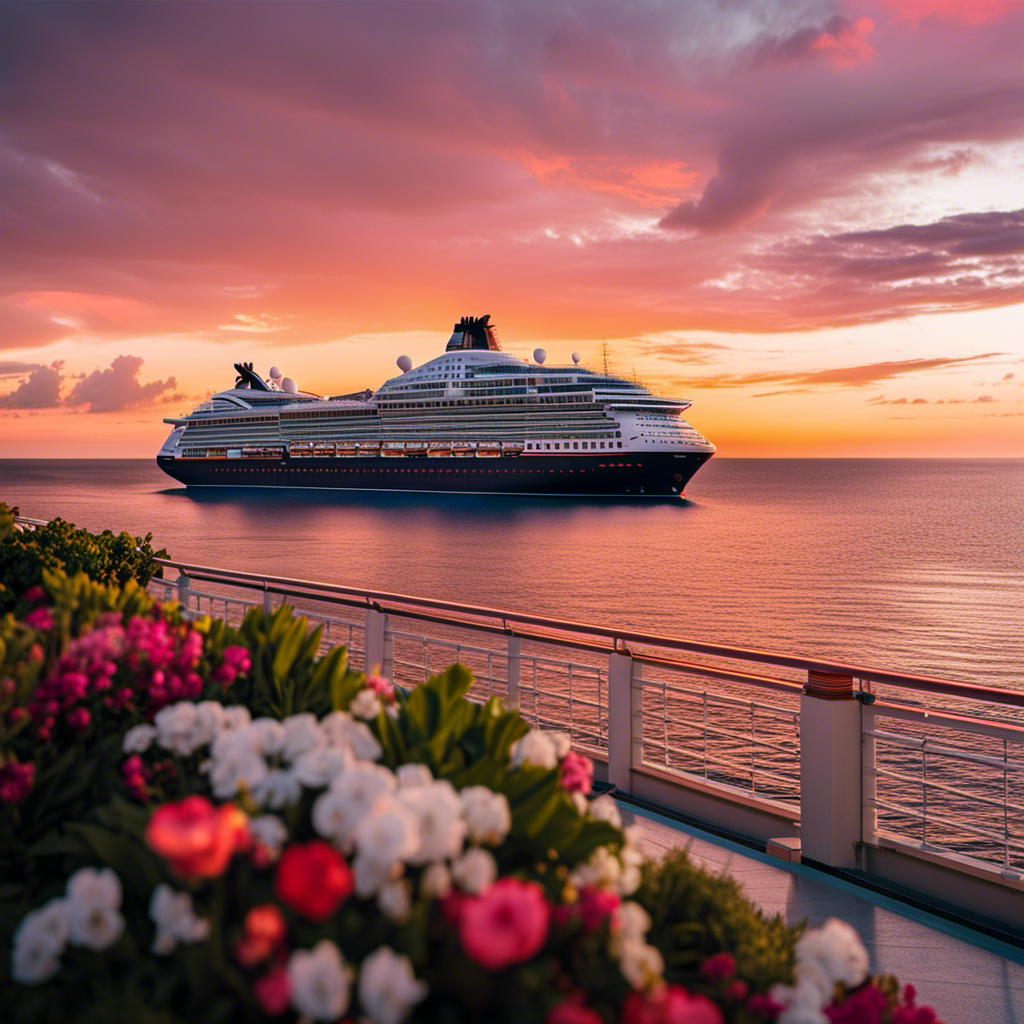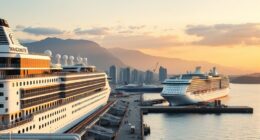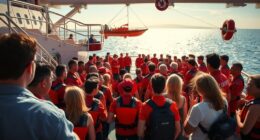Navigating through the turbulent waters of Pacific hurricanes endangering the West Coast of Mexico, it is crucial to recognize the profound effect these natural disasters have on seaside communities.
The intricate dance between atmospheric forces and geographical vulnerability unveils a tapestry of risks waiting to unfurl. From battered shores to compromised infrastructure, the implications of these storms stretch far beyond mere weather events.
Join us as we explore the intricate web of challenges these hurricanes pose to Mexico's western shores, illuminating the urgent need for proactive measures in the face of these looming threats.
Key Takeaways
- Coastal erosion and infrastructure damage weaken natural defenses and vital facilities.
- Economic consequences impact tourism, agriculture, and local economies.
- Public health risks from flooding, strong winds, and landslides are significant.
- Communities face disruption from water inundation, landslides, and transportation network damage.
Coastal Erosion and Infrastructure Damage
Pacific hurricanes pose a significant threat to Mexico's west coast through the erosion of coastal areas and the destruction of vital infrastructure. The gradual wearing away of shorelines and cliffs along Mexico's west coast is primarily driven by the powerful forces of these severe storms.
When Pacific hurricanes strike, the infrastructure damage is extensive, affecting roads, bridges, and buildings crucial for the functioning of coastal communities. Severe storms exacerbate coastal erosion, putting at risk key infrastructure such as ports, resorts, and residential areas. The economic losses resulting from this damage are substantial, impacting local economies and livelihoods.
Moreover, the vulnerability of Mexico's west coast increases as coastal erosion weakens the natural defenses against future hurricanes and other natural disasters. It's imperative to address the ongoing threat of coastal erosion and infrastructure damage caused by Pacific hurricanes to safeguard the well-being and prosperity of communities along Mexico's west coast.
Flooding and Landslides
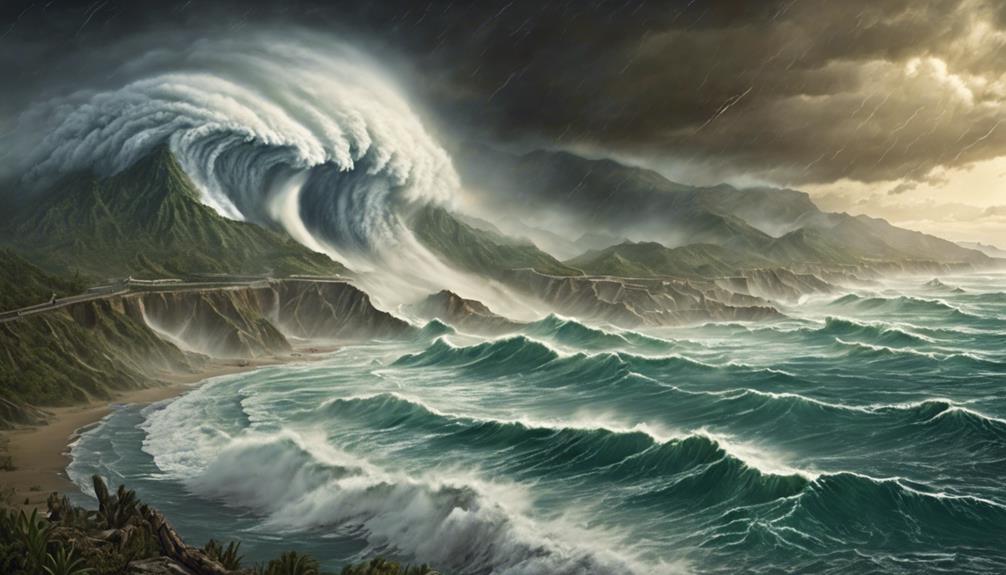
Examining the threat of flooding and landslides on Mexico's West Coast reveals the significant risks posed by Pacific hurricanes to both coastal and inland areas. The combination of heavy rainfall and steep terrain in this region makes it highly susceptible to disasters such as flash flooding and mudslides during these storms.
The following points emphasize the critical nature of this issue:
- Water Inundation: Pacific hurricanes bring substantial rainfall, leading to widespread water inundation in both coastal and inland areas of Mexico's West Coast.
- Risk of Landslides: The saturated soil from heavy rainfall during Pacific hurricanes increases the risk of landslides, particularly in mountainous regions along the coast.
- Flash Flooding: Rapid and dangerous water flow resulting from flash flooding poses a significant threat to communities and infrastructure.
- Mudslides: The steep terrain in Mexico's West Coast, coupled with heavy rainfall, creates conditions conducive to mudslides during Pacific hurricanes.
- Disaster Preparedness: Effective disaster preparedness and mitigation strategies are crucial in vulnerable coastal areas to minimize the impact of flooding and landslides during Pacific hurricanes.
Disruption of Transportation Networks
The impact of Pacific hurricanes on Mexico's West Coast extends beyond flooding and landslides, encompassing significant disruptions to transportation networks. When these severe weather events strike, road damage, landslides, and bridge destruction can paralyze the region's infrastructure, leading to blocked highways and impeding the movement of goods and people. Power outages resulting from the storms further compound the issue, affecting transportation systems reliant on electricity for operation. This infrastructure disruption not only hampers daily commutes but also poses challenges for emergency response efforts in hurricane-affected areas. Emergency responders prioritize restoring transportation networks to ensure access for rescue and relief operations, highlighting the critical role of functional roads and bridges during crises. Severe weather events like Hurricane Otis can also impact maritime transportation along the West Coast of Mexico, influencing port operations and shipping activities.
| Impact on Transportation Networks | Examples |
|---|---|
| Road Damage | Blocked highways |
| Landslides | Impeded movement |
| Bridge Destruction | Infrastructure disruptions |
Economic Impact on Local Communities
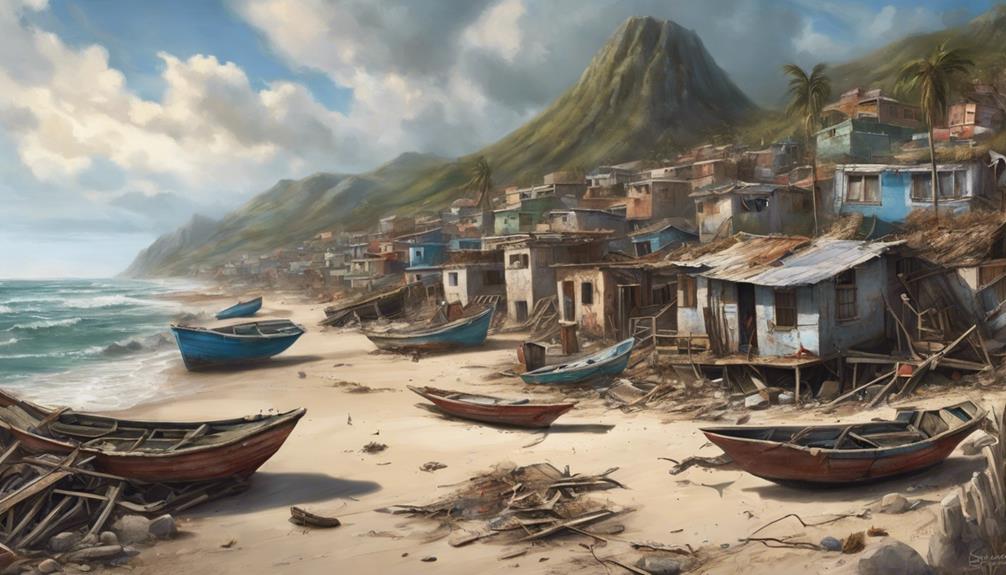
Considering the economic vulnerabilities of local communities, the aftermath of Pacific hurricanes on Mexico's west coast reveals profound disruptions across various industries. The economic impact on local communities is significant, with the following key points to consider:
- Tourism Disruptions: The tourism industry, a major source of income for coastal communities, suffers from damages to resorts, beaches, and attractions, leading to a decrease in visitors and revenue.
- Agriculture Industry: The agriculture sector faces challenges such as crop destruction, soil erosion, and infrastructure damage, impacting the production and supply chain of essential goods.
- Fisheries Industry: Damage to fishing boats, equipment, and coastal facilities hinders the operations of the fisheries industry, causing a decline in seafood output and economic losses for fishermen.
- Livelihoods Loss: The loss of jobs, businesses, and income due to the destruction caused by hurricanes results in a significant reduction in the quality of life for residents in the affected areas.
- Disaster Preparedness: Investing in disaster preparedness measures, resilient infrastructure, and sustainable recovery strategies is crucial to mitigating the economic impact of Pacific hurricanes on Mexico's west coast.
Threats to Public Health and Safety
Given the economic vulnerabilities of local communities, the threats to public health and safety posed by Pacific hurricanes along Mexico's West Coast are significant, particularly in terms of flooding, property damage, and risks to residents and emergency responders. Pacific hurricanes bring heavy rainfall that can lead to widespread flooding, increasing the risk of waterborne diseases and creating health hazards for the population. The strong winds accompanying these hurricanes can cause extensive property damage, power outages, and infrastructure destruction, further jeopardizing the safety of residents and emergency personnel.
Moreover, the potential for mudslides and landslides triggered by the intense rainfall during Pacific hurricanes escalates the danger to communities and transportation networks. Coastal areas face the additional threat of storm surges and high waves, putting coastal residents, beachfront properties, and maritime activities at risk. The aftermath of these hurricanes can disrupt essential services such as healthcare, clean water supply, and emergency response, impacting the overall well-being and safety of the affected population.
Frequently Asked Questions
Do Hurricanes Hit the West Coast of Mexico?
Yes, hurricanes do hit the west coast of Mexico. They bring destructive winds, heavy rainfall, storm surges, and potential flooding. The warm waters of the Pacific Ocean fuel their formation, posing significant risks to coastal communities.
What Is a Hurricane That Occurs in the Western Pacific?
In the Western Pacific, hurricanes are called typhoons. These intense tropical cyclones bring powerful winds, heavy rain, and storm surges. They pose threats to countries like Mexico's West Coast. Typhoons can cause significant damages and hazards.
Do Hurricanes Affect the West Coast?
Hurricanes do affect the West Coast. They pose significant threats, including infrastructure damage, power outages, and flooding. Preparedness is crucial. Our expertise guides us in implementing effective evacuation plans and disaster response strategies to mitigate these risks.
How Do Hurricanes Affect Mexico?
Hurricanes impact Mexico by causing widespread damage, especially during the July to October active season. Rising sea temperatures from climate change may fuel more intense storms, threatening coastal communities with extreme rainfall and stronger winds.
Conclusion
In conclusion, the looming shadow of Pacific hurricanes over Mexico's west coast is akin to a ticking time bomb waiting to unleash its destructive power. With the potential for coastal erosion, infrastructure damage, flooding, landslides, disrupted transportation networks, economic setbacks, and threats to public health and safety, the need for proactive measures to mitigate these risks is undeniable.
The data speaks for itself – preparation and vigilance are essential to weathering the storm ahead.
Claire, a creative soul with an unquenchable thirst for storytelling, is an integral part of the Voyager Info team. As a dedicated writer, she weaves captivating narratives that transport readers to enchanting cruise destinations and beyond.
Claire’s love affair with writing began at an early age when she discovered the magic of words and their ability to craft worlds and emotions. Her innate curiosity led her to explore various literary genres, but it was travel writing that truly captured her heart. Drawing inspiration from her own globetrotting adventures and encounters with diverse cultures, Claire embarked on a journey to become a travel writer par excellence.

